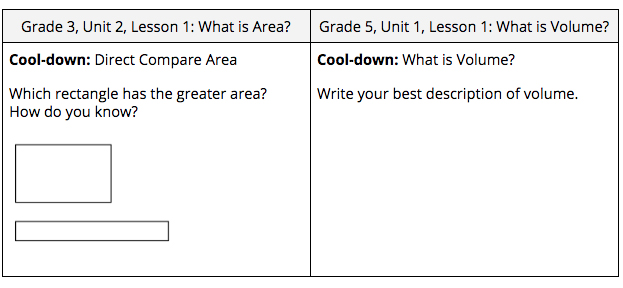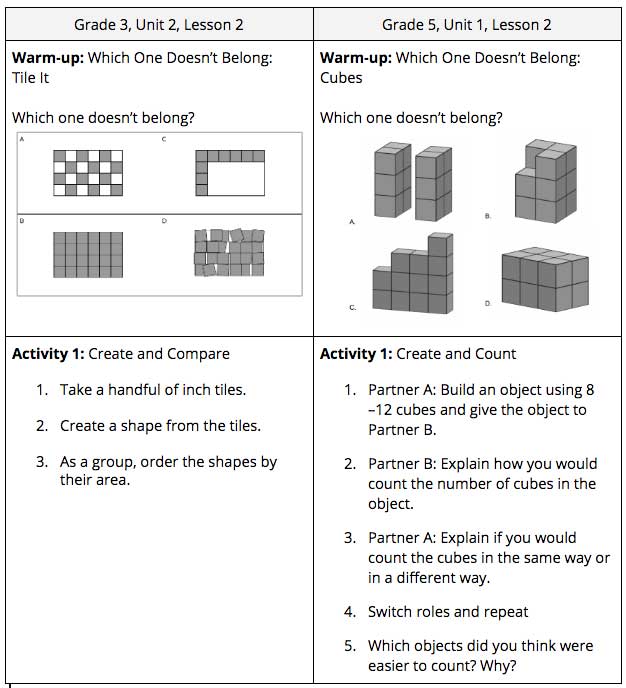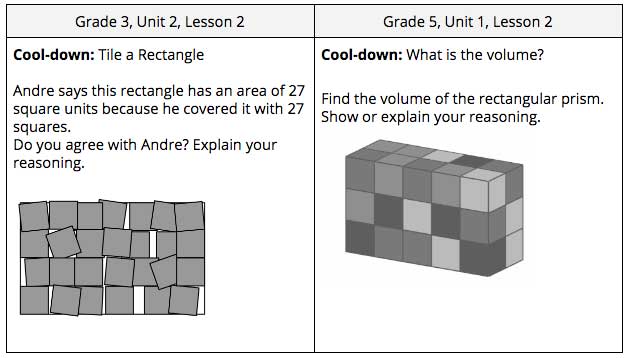By Kristin Gray, Director of K–5 Curriculum & Professional Learning
Curriculum
“An excellent mathematics program includes a curriculum that develops important mathematics along coherent learning progressions and develops connections among areas of mathematical study and between mathematics and the real world.“
Principles to Action by National Council of Teachers of Mathematics
Developing coherent learning progressions and connections among areas of study requires crafting lessons to tell a mathematical story. Lessons must coherently build across units and grade levels and attend to many things: the mathematics, representations, activity structures, and learning trajectories, to name only a few. Each of these considerations impact how students access the mathematics and influence the belief that mathematics is a connected set of ideas that makes sense.
There are many mathematical stories and ideas that connect over the course of the K–5 curriculum materials and beyond. One example that stands out to me in the units we have written so far is the story of area and volume in grades 3 and 5. While this story by no means begins in grade 3, for brevity’s sake let’s zoom in and take a quick look at how we developed the mathematical ideas related to these parallel measurement standards in the IM K–5 Math curriculum.

Both the grade 3 area unit and grade 5 volume unit begin with opportunities for students to reason about what area and volume are before diving into how they can be measured.
The first lesson in each unit asks students to look for common attributes of four different figures or objects and use various math tools to compare different pairs of figures and objects to decide which is “larger” in a way that elicits a need to define what we mean by “larger”. Students have the opportunity to contrast prior understandings of length (in preparation for understanding area) or area (in preparation for understanding volume) as they begin to consider each new measurable attribute.

In Activity 2 of each of these lessons, students tile different figures with pattern blocks (grade 3) and build some objects with connecting cubes (grade 5) to elicit the idea of what it means for a figure or object to occupy space and introduce the terms area and volume. In the lesson synthesis, at the end of the lesson, the terms area and volume are revisited in reference to students’ work in both activities to wrap up the learning of the day. For teachers to formatively assess what students learned that day, each lesson ends with the following cool-down, or exit ticket, for students.

In the next lesson, students are asked to consider ideas related to area and volume in each of these warm-ups. This leads into Activity 1 where they create shapes with unit squares and unit cubes to begin to reason about how we can measure volume.

Activity 2 in each these lessons focuses on ways in which we can count squares and cubes to find area and volume. There is no correct answer to which objects were “easier” to count in grade 5 because it is personal preference, but for the teacher it will be informative to hear if students find the structure of the rows and columns helpful in counting. The lessons conclude with the following cool-downs.

While the understandings of area and volume continue across each grade level, the story continues in Grade 6, Unit 1: Area and Surface Area, Grade 7, Unit 7: Angles, Triangles, and Prisms, Grade 8, Unit 5: Functions and Volume, Algebra, Unit 6: Introduction to Quadratic Functions, Geometry, Unit 5: Solid Geometry, and Algebra 2, Unit 2: Polynomials and Rational Functions.
I want to give a huge shout out to grade 3 writers Zack Hill and Noelle Conforti Preszler, grade 5 writers Sarah Caban and Sahar Khatri, and grade 3–5 lead Dionne Aminata Samb, who collaborated to build these lessons so deliberately. It made my job of highlighting the parallel activity structures that offer students access to the story of area and volume so easy.
Next Steps
To get updates about IM K–5 Math, coming in 2021, fill out this form!
To read more about the writing and design of IM K–5 Math, check out more posts on the IM Certified Blog!
